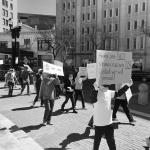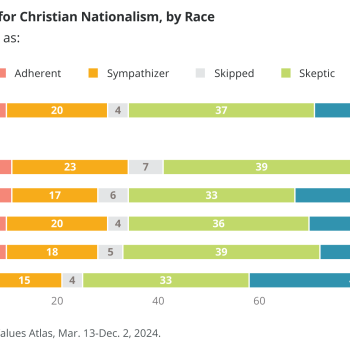What stops racial violence?
I won’t answer that question fully here (I’ve got a book to write to answer that question), but I want to point to a specific and perhaps complicated historical tactic for reducing this violence, particularly its instantiations in the last century, though obviously there are analogs in the centuries before. This tactic, in many ways, is the basis of a number of other tactics that resist racial violence. The tactic is the shaping of public opinion, precipitated by the assumption that if people know the evil, they will resist it. It is a common assumption. It was true in the civil rights era. It continues to be true today in our discourse surrounding police violence. I’m sure in the minds of some, the revelation of body cam footage is partially meant to convince and to shock people into action. My mind and research is already saturated enough with Black death (and the joys of Black life too, don’t get it twisted!); I do not need videos of battered bodies to remind me of the fundamentally violent evil of racial capitalism. But the assumption that public opinion is the most important aspect of this debate is an old one. Here are a few examples!
In late December, 1889, the nation bore witness to a mass lynching in Barnwell, South Carolina which one California newspaper named “The Barnwell Atrocity.” Eight black men, accused of complicity in two murders, were dragged out of jail, tied to trees, hanged and shot. Benjamin Franklin Lee, then bishop of the A.M.E. Church and editor of the Christian Recorder, wrote an editorial thirty days after the lynching, updating the community. But his primary question was: “Where are the press and the pulpit?”
This lynching was exceptional in the sense that the governor of South Carolina publicly denounced it and offered a reward of 200 dollars for the arrest and conviction of anyone involved. Lee reported the result of that tactic: “That was nearly a month ago. No person has ever been arrested, and hence nobody has claimed the proffered reward…nobody has been punished. No-not a single individual of the mob of two hundred has been arrested and dealt with.”
Lee was not naïve enough to be surprised by this lack of accountability. Instead, he affirmed the quick declaration of the governor and the “manly” courage of the nationwide press in denouncing the act. But he had no hope that this denunciation would lead to prosecution. His pessimism was well founded: the day after the lynching, a group of self-proclaimed “prominent and respectable citizens of Barnwell” wrote a statement affirming that there was nothing in the lynching that ought to garner disapproval. As a matter of fact, the only thing regrettable about the act was that it was necessary. Lee had something to say about that:
Of course none of the slayers will be punished. It is to be assumed that there is no conscience in white South Carolina that will demand any remorseful toll of the bloody grist. The tragedy of Barnwell may be regarded as played out.
But the editorial was not entirely a massive downer. Lee then turned to thirty-two women and children who mourned the eight murdered men. In the aftermath, the Black churches in the area gathered around the victims’ families, contributing money to house and support them. With this in the background, Lee uttered his most damning indictment:
When we hear from the white Christians of that bailiwick, it will give us great pleasure to chronicle the result. The public elsewhere will be interested to know whether the color line and the Christian line are coincident in that region. We have heard from the black Christians. Shall we hear from the white Christians?
The presence of consistent anti-lynching voices coming from Black communities probably made more folks than Lee wonder whether the color line and the Christian line were coincident. In our current age of racial violence, more white Christians deign to speak, yet primarily what rises from the mouths of the suffering is a call for those words to be consistent rather than occasional. Lee’s point in this portion was this: anyone who claims to be Christian has a responsibility to speak out against this violence because the very act of speaking is necessary for convincing. Only the convinced can actually agitate.
A lot of this stemmed from the assumption, in the lynching era and perhaps todays, that the pulpit was perhaps the most important place to address social evil in general and lynching specifically. Reverend R. S. Quarterman from Orlando, Florida was entirely certain of this, writing:
What will stop lynching? Will class legislation? No. Will party affiliation? No. Then what will stop it? Public sentiment or public opinion…History will sustain us in saying that you cannot suppress any great evil until the pulpits do their duty…We must reach the masses, and this can only be done by appealing to their reason from the pulpits.
Assumed in Quarterman’s paean to the sermon was an assumption that the lyncher could be reasoned out of murder, along with the idea that the pulpit is the best avenue for the dissemination of public and moral admonition. Quarterman would point to pastors in all churches to preach against lynching, arguing that lynching was a symptom of a broader culture that could best be shaped by preaching. The rather strong claim that great evils can’t be suppressed without the pulpit would, in the case of lynching, not necessarily match up with the data. Great evils can sometimes be suppressed even in the midst of a profound number of unfaithful pulpits.
It is assumed even today that public sentiment is the primary driver of social change. It ought to be sobering, then, that we saw mass mobilizations in the aftermath of the state-sponsored lynching of George Floyd in numbers not seen since the Vietnam war and Civil Rights movement, and have not yet seen widespread legislative change. To the contrary, we are, in some states, witnessing retrenchment and new modes of racialized intimidation. This suggests to me that public opinion is not the answer to these issues because if those opinions are not mobilized, they cannot save lives.
Here, the language of racial capitalism helps us (and get used to hearing about it in my pieces!) If it is the case that the “culture” which produces racial violence is not merely a matter of race but inextricably a matter of money and class, everyone thinking that violence is bad or that it was terrible for Tyre Nichols to be murdered will not save the life of a single person. That outrage must be mobilized into particular political action, particular acts of economic and political solidarity, and the building of new systems that tend toward the support of life rather than the commodification of it. Lynching did not fade because people stopped being racist; it faded because it became bad for American business. Perhaps the only way that racial violence of any kind will fade is if it becomes profitable for no one.














